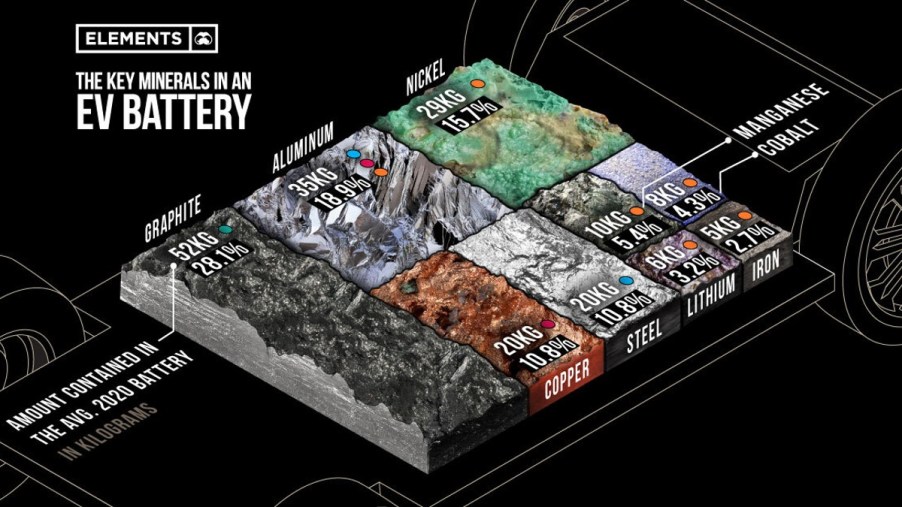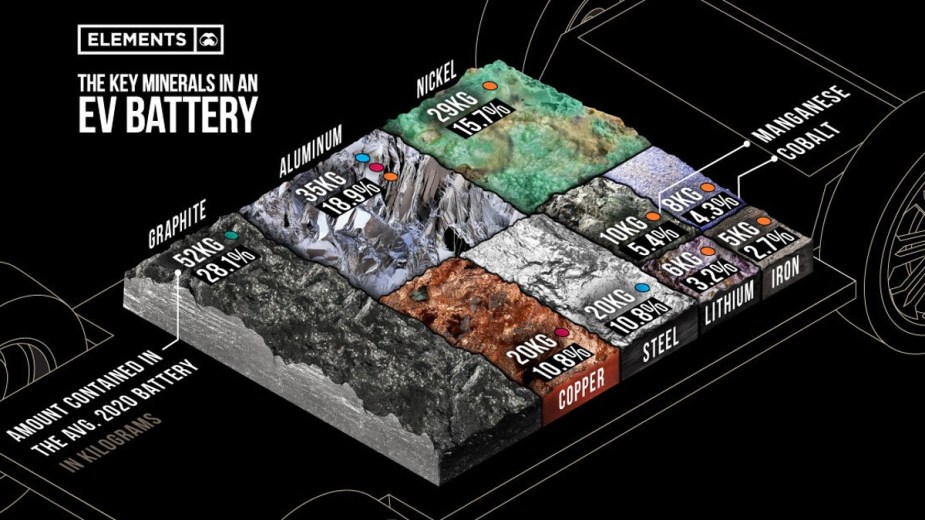
Is There Really a Downside to Electric Vehicles?
Does the “end justify the means,” or should we simultaneously find a way to protect Mother Earth and the environment? This question is best answered by experienced experts at the International Energy Agency (IEA). The IEA reports that an electric vehicle requires six times the mineral inputs of an internal combustion engine (ICE) vehicle. That’s an alarming figure and one that should have us concerned.
What materials are used to create batteries for electric vehicles?

The primary materials in an EV battery are:
- Nickel
- Lithium
- Cobalt
- Copper
- Rare Earth metals
- Neodymium
- Dysprosium
The environmental challenge presented with these batteries is the disposal and recycling of the materials.
Currently, 95% of the lead-acid batteries used in ICE vehicles are recycled, but only 5% of the EV lithium-ion batteries are recycled. Could this be due to the newness of the electric vehicle market, or are the materials in these batteries non-recyclable?
Is oil more abundant than the materials necessary for EV batteries?

Yes, in fact, oil is one of the most abundant materials in the world. This material is demonized as a fossil fuel to the point that we forget this fact. The four top oil-producing countries in the world are:
- United States
- Russia
- Saudi Arabia
- Canada
Conversely, the materials for electric vehicle batteries aren’t nearly as abundant. The diverse mixture of metals comes from only a handful of third-world countries.
What part of the environment will electric vehicles protect?
If we continue to move toward a world where more EVs are sold, and eventually all ICE models are gone, we’ve made a collective commitment to protect the atmosphere and not the Earth itself. Electric vehicles don’t pollute the air. These vehicles are considered zero-emissions vehicles, but the clean air comes at a cost. That cost is the materials required to make the batteries for these electric cars.
Are automakers working to recycle or reuse electric batteries?
Yes, many automakers have begun to research ways to store used, recycle, break down, and reuse electric vehicle batteries. Audi is working with Nunam to develop battery-powered rickshaws to recycle used batteries from Audi e-tron models. Volkswagen is researching methods of breaking down electric vehicle batteries to reuse the materials, and a few private companies are working to store and recycle these batteries.
Is it actually cheaper to charge electric vehicles than to fill a tank of gas?

When the same-size vehicles are refueled, yes, recharging EVs is much more affordable. If you expect a GMC Hummer EV to be as affordable to refuel as a Honda Civic, you’ll be sorely disappointed.
Although it’s cheaper to refuel EVs than ICE vehicles, the electricity provided isn’t as clean as you might think. Most electricity is still produced by burning coal, which expels harmful greenhouse gas chemicals into the environment.
Will electric vehicles be good or bad for the environment overall?

This question requires a bit of speculation. If automakers find a safe way to either reuse the materials for EV batteries or recycle them, it’s possible for electric vehicles to have a positive impact on the environment. In addition to recycling, cleaner methods of producing electricity are necessary to continually reduce greenhouse gases associated with EVs.
Next, check out which charging stations you should use, or learn more about the environmental impact of electric vehicles in the video below:



